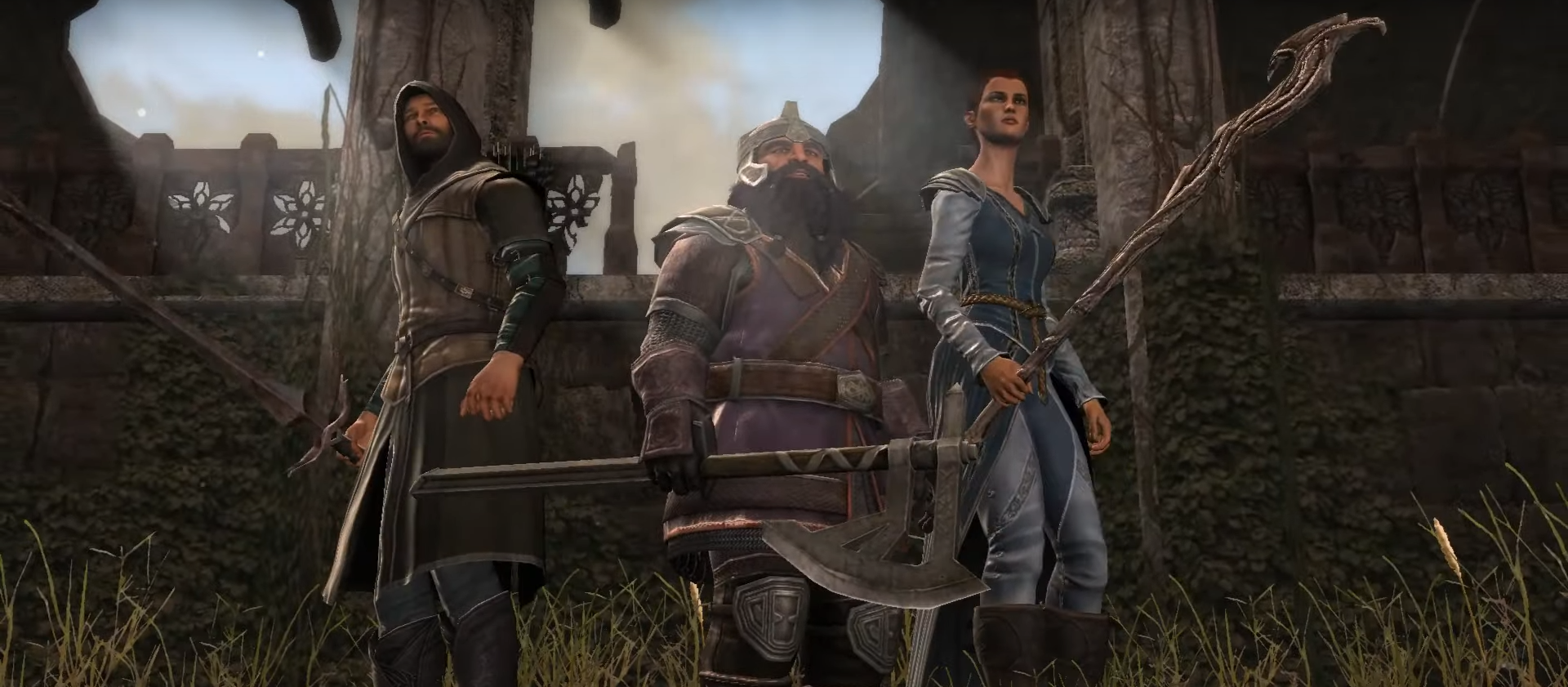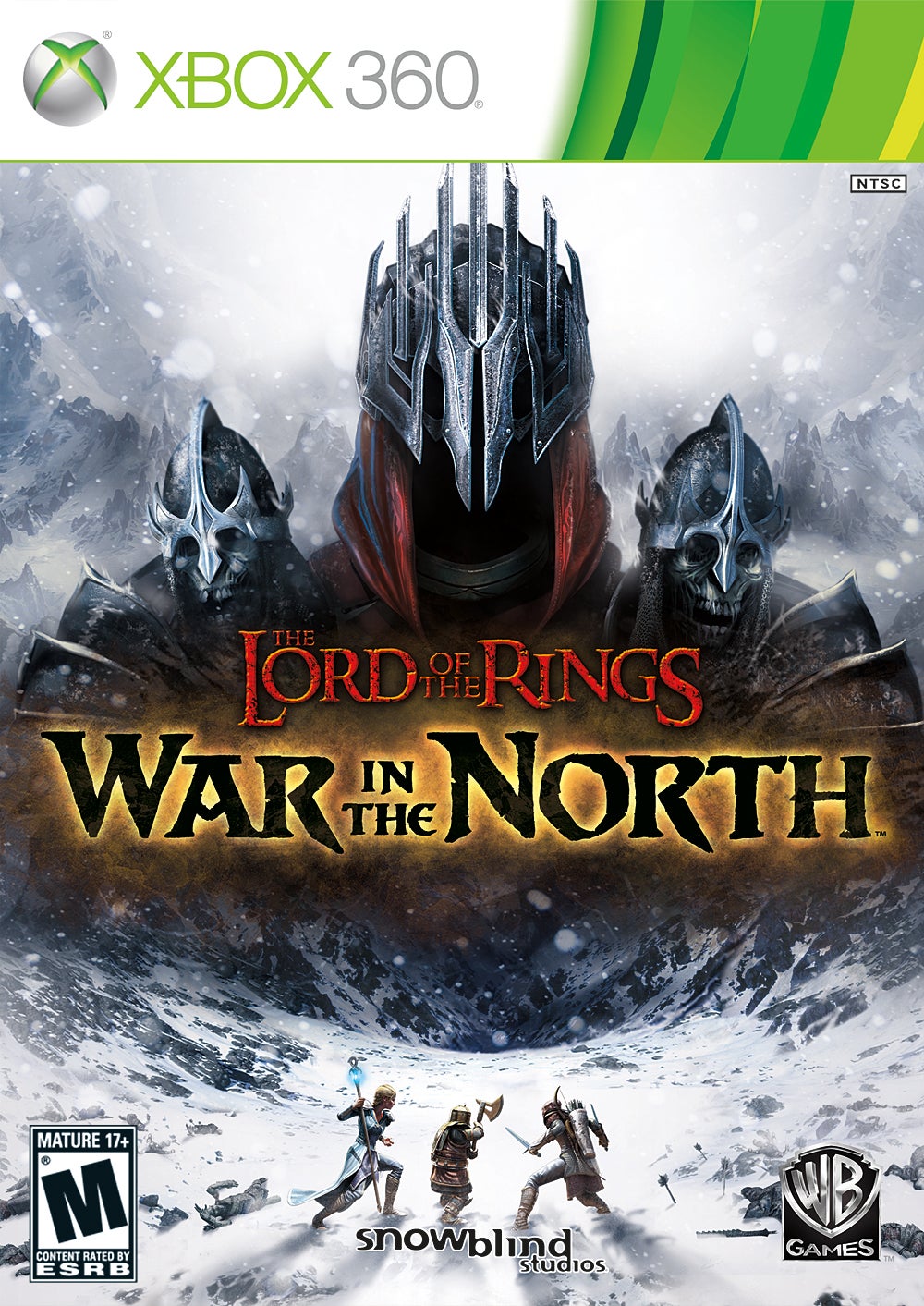

“Of the great War of the Ring many songs have been sung and many tales told.”
The Lord of the Rings: War in the North adds a minor blemish to J.R.R. Tolkien’s legacy by lifting the veneer of Peter Jackson’s cinematic Middle Earth and pasting it over a thoroughly lackluster action RPG. Unwilling to permanently mar the canon proper (or perhaps restricted by whatever agreement with Tolkien’s estate), developer Snowblind Studios elects to tell of a clash between an alternate fellowship and foe that runs parallel to the book series’ main narrative—a heretofore unseen trio consisting of a man, a dwarf, and an elf, pitted against a newfound Black Númenórean (who seems too important to plausibly have eluded mention before now) and his associated legion of orcs, trolls, and Black Riders. There are a few cameos from familiar characters (even some not seen in the films!) so that the player doesn’t entirely lose interest in the lifeless offshoot storyline.
One of the (many, many) things I have always appreciated about Tolkien’s legendarium is that its deep sense of magical enchantment is always tempered by limitations on its sorcery. Through “a special study of bewitchments with fire and light,” Gandalf is able to conjure and manipulate flames and illuminate the darkness. Among other, lesser arts, he can also perform minor feats of telepathy, telekinesis, and healing, respectively communicating with Elrond from a considerable distance, cheerfully guiding his smoke rings through one another, and restoring an ailing Theoden. Each of these acts clearly take a toll on the wizard, who has spent his life studying and perfecting them. And unless he’s making fireworks or playing lighthearted games, he’s always reluctant to resort to their use. When Frodo and his companions visit Lothlórien in The Fellowship of the Ring, the Ring-bearer remarks upon the hidden magic that Sam struggles to perceive. “You can see and feel it everywhere,” says Frodo. “Well, you can’t see nobody working it,” Sam replies. This is a world saturated with the supernatural and arcane, and yet sufficiently grounded that spectacular physical manifestations of real magic are so infrequent and limited that they retain their power to surprise the reader.
Movies and games always take liberty with that sort of thing, and past Lord of the Rings titles such as The Return of the King and Conquest (both of which I like) include plenty of unchecked wizardry, but, to cut to the chase, War in the North features a villain that by all appearances possesses a command of the dark arts that exceeds the mastery of any of the series’ main villains—Sauron, Saruman, the Witch-king, the Mouth of Sauron, the Nazgûl, Durin’s Bane, Shelob. A levitating, teleporting, lightning-slinging fiend that could probably conquer Middle-earth without the One Ring.
War in the North not only fails to capture the essence of Tolkien’s magnificent fantasy world, but more importantly, it fails to be a compelling videogame. Little more than a linear dungeon crawler, it drip feeds the player a steady supply of gear, abilities, and loot—a decent enough formula if all you’re looking to do is mindlessly whack bad guys while discovering more powerful weapons to whack the bad guys with. But even if its M-rated hack ‘n’ slashing is enjoyable at first, with its slow-mo amputations, the untuned leveling system results in players dealing with annoyingly overpowered enemies; bludgeoning a spongy orc to death with dozens of blows from a warhammer isn’t an impossible task, of course, it just doesn’t feel right.
The template for what this game could have been exists: it’s X-Men Legends, it’s Marvel: Ultimate Alliance. This is just a passionless cash-in on a wonderful fantasy series that deserves and has occasionally received much better. Serviceable, but far too derivative of better, unlicensed games that stand or fall on their own merits.